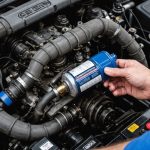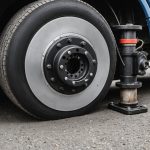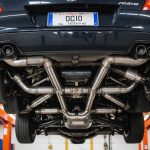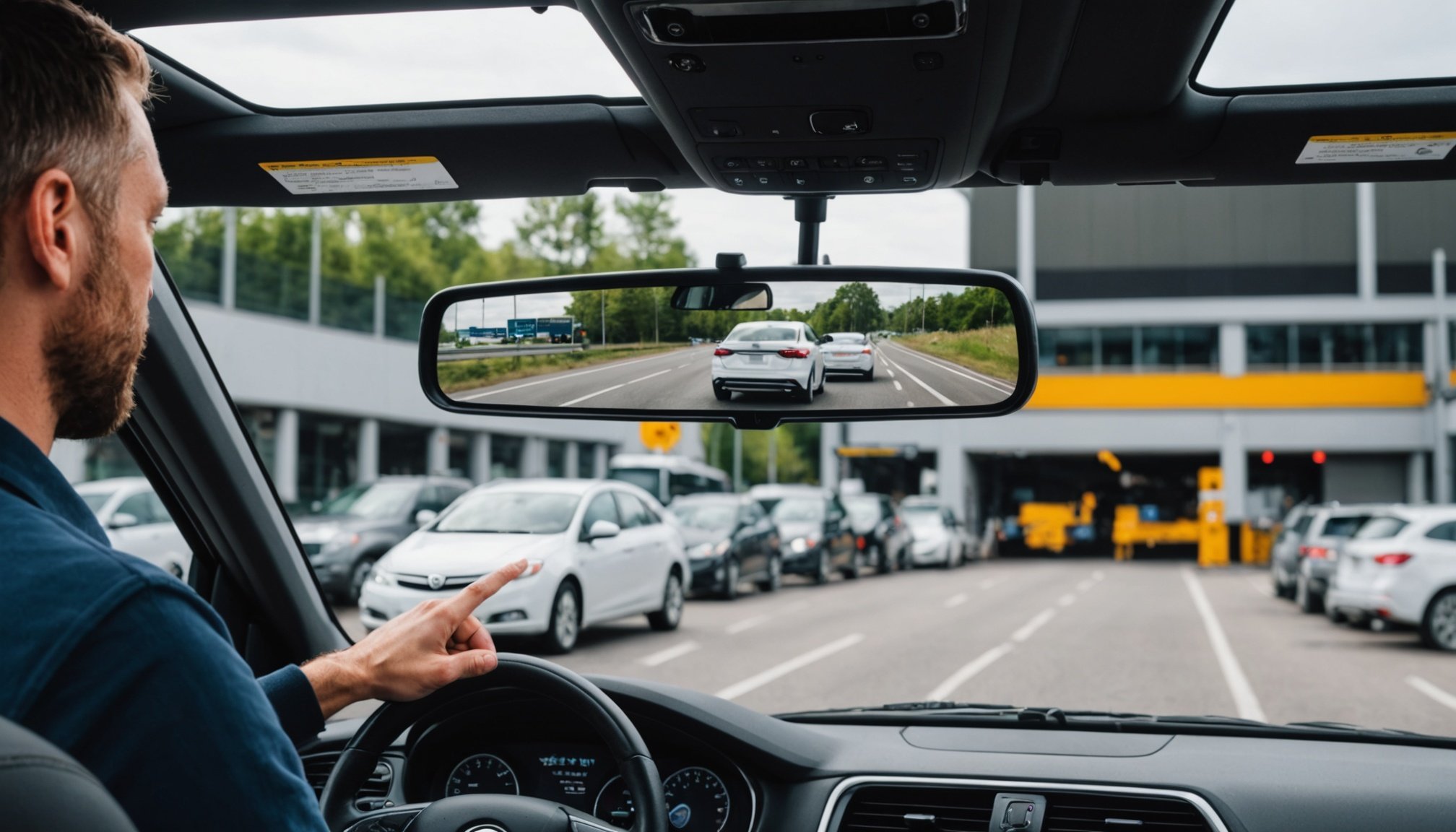Overview of ADAS and Rearview Mirror Replacement
Advanced Driver-Assistance Systems (ADAS) have become an integral part of modern vehicles. They enhance vehicle safety by providing features such as lane departure warnings, adaptive cruise control, and automatic braking. The rearview mirror plays a crucial role within these systems, often housing cameras and sensors that contribute to the vehicle’s safety features.
Replacing the rearview mirror, therefore, requires careful assessment of its connection to ADAS functions. Vehicle safety can be compromised if the replacement fails to accurately integrate with the system’s components, leading to potential malfunctions. It is essential that replacement components are compatible and correctly calibrated to ensure the continued functionality of safety features.
Also to see : Essential Tips for Replacing Windshield Wipers: Ensure Crystal-Clear Visibility in Stormy Conditions
The ADAS relies on a symbiotic relationship between various sensors and the rearview mirror, which can affect detection accuracy if disrupted. Rearview mirror replacements should be executed by professionals who have the expertise to manage these technologies. Ensuring proper integration helps maintain the ADAS’s reliability, providing drivers with the confidence and security they expect from their vehicle.
Understanding the critical function of the rearview mirror within ADAS components highlights the importance of precision in replacements, ultimately preserving the standard of vehicle safety.
Have you seen this : Essential Tips for Preparing and Sustaining Your Vehicle”s EGR System for Peak Performance
Necessary Tools and Equipment
When embarking on the task of rearview mirror replacement, having the right tools and equipment on hand can significantly streamline the process. Here’s an equipment checklist to ensure you’re prepared:
-
Screwdrivers: Both flathead and Phillips are essential. They assist in detaching and re-attaching the mirror.
-
Adhesive Kit: Often, a new mirror will require adhesive for attachment. Ensure the adhesive is specifically for automotive purposes to ensure durability.
-
Plastic Trim Removal Tools: Essential to prevent scratches when removing plastic trims around mirrors.
-
Measuring Tape: Important for aligning the new mirror correctly with the old one’s position.
To safely install your new mirror, consider additional vehicle maintenance tools. Items like a torque wrench can ensure screws are secured to the proper tension, preventing future problems.
Safety gear is paramount. Goggles and gloves protect against injuries when dealing with broken glass or sharp tools. Always remember, even minor tasks require a necessary level of precaution to ensure both a safe and successful installation. Proper preparation with the right tools and safety measures not only facilitates a smooth replacement process but also enhances the longevity of your vehicle’s components.
Step-by-Step Guide to Replacing the Rearview Mirror
Replacing a rearview mirror can seem daunting, but with the correct steps and tools, you can accomplish this task effectively through DIY mirror replacement.
Preparing the Vehicle
Before beginning the installation process, ensure your vehicle is parked on a level surface and the ignition is off. Gather all necessary tools, including a screwdriver, adhesive remover, and the new rearview mirror. It’s essential to have a clean working area to prevent any damage during the installation.
Removing the Existing Mirror
Start by gently detaching the mirror cover if your car has one. Use a screwdriver to unscrew any mounting brackets. When doing a DIY mirror replacement, it’s crucial to avoid scratching or damaging the windshield. Once unscrewed, carefully detach the existing mirror. If the mirror is glued, use an adhesive remover to loosen it before removal.
Installing the New Mirror
Begin by aligning the new rearview mirror with the mounting spot. Secure it with screws, ensuring they are tight enough to hold the mirror reliably. If adhesive is required, apply it to the designated areas and press firmly. Allow the adhesive time to dry according to the manufacturer’s instructions. Test the positioning and adjust as required to maintain a clear view.
Safety Considerations
When it comes to vehicle safety, mirror replacement is a task that requires careful attention to detail, especially concerning electrical safety. Before starting any work, be sure to disconnect the vehicle’s battery to prevent electrical hazards. This simple step is essential to avoid electrical shocks and potential damage to the car’s systems.
Common pitfalls during mirror replacement often include misalignment and improper wiring connections. To ensure a correct fit, it’s crucial to handle the mirror gently and align it precisely with the designated slots or brackets. Securely fastening the bolts or screws will prevent the mirror from becoming loose over time.
Furthermore, verifying that the mirror operates smoothly after installation is critical. Check the electrical connections for powered mirrors by testing all the functionalities, such as folding mechanisms and heating elements. If any function is impaired, it might indicate faulty wiring, necessitating further inspection.
Lastly, practicing these safety tips enhances vehicle safety and prolongs the mirror’s lifespan, reducing long-term risks. By diligently following these guidelines and addressing any issues promptly, motorists can maintain optimal safety standards and mirror functionality.
Recalibrating ADAS Features Post-Replacement
After replacing parts or conducting repairs, recalibrating ADAS systems (Advanced Driver-Assistance Systems) is crucial. This process ensures safety features like lane-keeping assist and adaptive cruise control function accurately. If ADAS recalibration isn’t performed, these systems may operate imperfectly, potentially leading to safety issues.
Why Recalibration is Necessary
Recalibrating ADAS features maintains the integrity of vehicle technology by aligning cameras and sensors properly, which can shift during repairs. This alignment ensures the system can accurately detect surrounding conditions and respond accordingly.
Step-by-Step Recalibration Procedures
- System Diagnosis: Technicians perform a system check to identify specific recalibration needs.
- Calibration Setup: Using a system calibration tool, they create the necessary environmental setup for accurate calibration.
- Adjustment Process: Precision adjustments are made to match sensor data with actual vehicle positions.
- Verification and Testing: The system undergoes tests to confirm proper function in various scenarios.
Tools and Professionals Needed for Calibration
Successful ADAS recalibration necessitates specialized calibration tools and skilled professionals versed in ADAS technology. These typically include laser alignment tools and computer diagnostic equipment, operated by trained automotive technicians to ensure safety and reliability.
Troubleshooting Common Issues
After replacing components, you might encounter a variety of installation issues or other vehicle-related problems. Recognizing these issues early can save time and resources.
Common problems often include improper installation leading to unstable performance. Check that all connections are secure and that parts are installed correctly. If the issue persists, a recalibration of the vehicle’s systems might be necessary.
Unusual noises or vibrations can occur after a replacement—this might indicate that something isn’t properly aligned. In this case, inspecting bolts and mounts for tightness is crucial. If self-checking does not resolve the issue, professional inspection is advisable.
Failure in electronic components, like sensors, can also present problems. Regularly updating software that manages these components can prevent malfunctions. Clearing error codes from the system after troubleshooting is necessary to avoid future confusion.
Know when to seek professional assistance. If after going through common solutions, vehicle problems persist, a skilled mechanic can offer specialized intervention. Addressing troubleshooting challenges promptly enhances vehicle reliability and safety, while also conserving resources in the long run.
Regulatory Standards and Best Practices
In the automotive industry, adhering to Vehicle Regulations is essential, especially concerning Advanced Driver Assistance Systems (ADAS) and mirror replacement guidelines. These regulations ensure that safety standards are maintained, significantly reducing the risk of accidents. Regulatory bodies, such as the National Highway Traffic Safety Administration (NHTSA), set these standards to enhance the safety and performance of vehicles on the road.
When it comes to mirror replacements, it’s crucial to follow the specific guidelines provided by the manufacturer and certified automotive experts. This may involve recalibrating ADAS sensors, which are often affected by mirror adjustments or replacements. Ignoring these best practices can lead to sensor errors, hampering vehicle safety.
Safety standards play a pivotal role in maintaining compliance. Regularly updating and inspecting software and hardware components is vital for sustaining efficacy and accuracy. It ensures that all ADAS features, such as collision warnings and lane assistance, function correctly.
To prioritize safety and compliance, it is imperative to remain informed about evolving vehicle regulations and adopt recommended practices. This proactive approach not only enhances vehicle reliability but also protects drivers and passengers.











